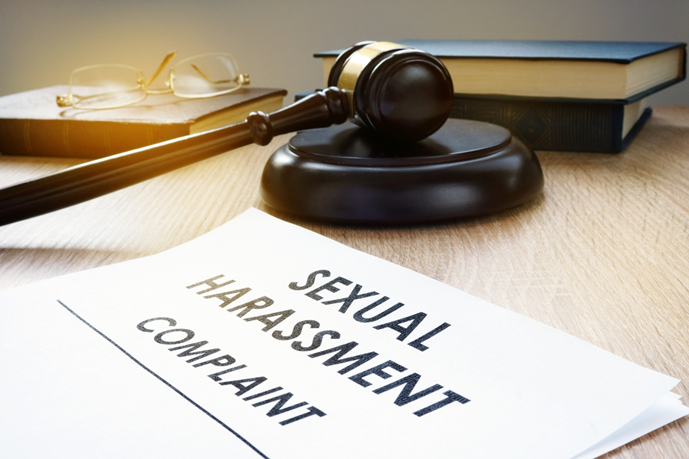Has someone acted in a sexually harassing manner towards you at work?
Harassment can take different forms. The harasser might suggest or ask inappropriately for sexual favors. Or, they might make offensive comments about your body or appearance. It could also be physical touching that makes you uncomfortable.
Sexual harassment at work is illegal. But the laws to protect people from it are not as clear-cut as you would like them to be. This means you will have to work with professionals to coordinate a harassment lawsuit.
Here is all you need to know about the steps to take in a sexual harassment lawsuit and what happens next.
Report the Incident and Hold Your Employer Accountable
If you have been sexually harassed at work, you may be able to file a lawsuit against your employer. The first step is to report the incident to your boss or human resources department.
If they do not take action, you may be able to file a complaint with the Equal Employment Opportunity Commission (EEOC). You will need to show that the harassment was unwelcome and that it created a hostile work environment.
Sexual harassment in the workplace is a serious issue that can often be difficult to address.
Filing a lawsuit can be a complex and time-consuming process, but it may be the best way to hold your employer accountable for their actions and get the compensation that you deserve.
Document the Harassment
When filing a sexual harassment case, it is important to document the harassment. This can be done by keeping a journal of each incident, including the date, time, and location.
If there are witnesses, be sure to get their contact information. If the harassment is happening at work, keep copies of any emails, texts, or other communications that are related to the harassment.
If possible, take photos or videos of the harassing behavior. This documentation will be important in proving your case.
Find an Experienced Sexual Harassment Attorney
When filing a sexual harassment lawsuit, it is important to find an experienced sexual harassment attorney who can help you build a strong case.
Your attorney will likely ask you for detailed information about the harassment you experienced, including when it occurred, who was involved, and any witnesses who may have seen or heard the harassment. The more evidence you can provide, the better.
In addition to gathering your own evidence, your attorney may also request documents and records from your employer, as well as depose witnesses.
If your case is strong, your attorney may be able to negotiate a settlement on your behalf. If not, you may need to file a lawsuit and take your case to trial.
Be Prepared for a Lengthy Battle
The process of filing a sexual harassment lawsuit is long and difficult, but it is worth it if you have been the victim of this type of discrimination.
If they find that there is merit to your case, they will file a lawsuit on your behalf. This can take months, or even years, to resolve. In the meantime, you will need to be prepared for a lengthy battle.
This may include having to take time off from work, testifying in court, and dealing with the stress of the legal process. But if you are successful, you will have the satisfaction of knowing that you have fought for your rights and helped to make the workplace safer for everyone.
Steps in Filing a Sexual Harassment Lawsuit
First, you must file a complaint with the Equal Employment Opportunity Commission (EEOC) or your state’s fair employment practices agency. You must do this within 300 days of the alleged harassment.
The EEOC will then investigate your claim and decide whether or not to file a lawsuit. If they decide not to pursue your case, they will give you a “right to sue” letter, allowing you to file a private lawsuit against your employer.
If you decide to file a private lawsuit, you must file a complaint in federal or state court within 90 days of receiving your “right to sue” letter. You will then need to prove that the harassment occurred and that it was severe and pervasive enough to create a hostile work environment.
This can be difficult, so it is crucial to consult an experienced employment investigation lawyer before filing your lawsuit.
Potential Outcomes of a Sexual Harassment Lawsuit
The potential outcomes of a sexual harassment lawsuit include monetary damages, injunctive relief, and punitive damages. Monetary damages can include back pay, front pay, and damages for emotional distress.
Injunctive relief can include an order for the harasser to stop the harassing behavior and can also include an order for the company to implement policies to prevent future harassment.
Punitive damages are designed to punish the harasser and deter future harassment and can be awarded in addition to other damages.
Know Your Rights and Speak Out
If you have been sexually harassed at work, you may be able to file a sexual harassment lawsuit. You must gather evidence, including relevant emails, text messages, or witness statements.
You must also file a complaint with the Equal Employment Opportunity Commission (EEOC). Once you have done so, an EEOC investigator will look into your claim and decide whether to bring a lawsuit on your behalf.
If you have been sexually harassed, do not hesitate to take legal action.
Check out our blog posts today for more informative articles.











